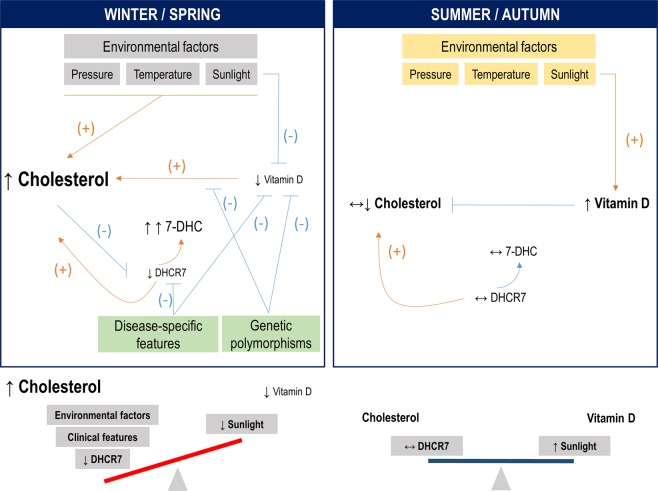Figure 3.
Overview model of the interplay of vitamin D and lipid profiles in RA. Our results support a role for DHCR7 and genetic polymorphisms to account for the associations between vitamin D and lipid profiles in RA, in a seasonal-dependent manner. In winter/spring, environmental factors can trigger an imbalanced vitamin D/lipid profile, which can be in turn exacerbated by their mutual, complex regulation mechanisms, decreasing DHCR7 levels playing a crucial role. Due to the decreased DHCR7 levels and low sunlight exposure, the common substrate 7-DHC may be mainly shunted towards cholesterol rather than vitamin D production, hence aggravating the imbalance. Disease-specific features and genetic polymorphisms can reinforce these pathogenic loops. In summer/autumn, a more favorable effect on vitamin D by environmental factors may lead to a tighter balance among vitamin D, lipid profile and DHCR7 levels, as demonstrated by the positive associations observed in our study. (−) denotes a negative/inhibition effect, whereas (+) denotes a promoting effect. ↑: increased; ↔ : no change, normal levels; ↓: decreased.

